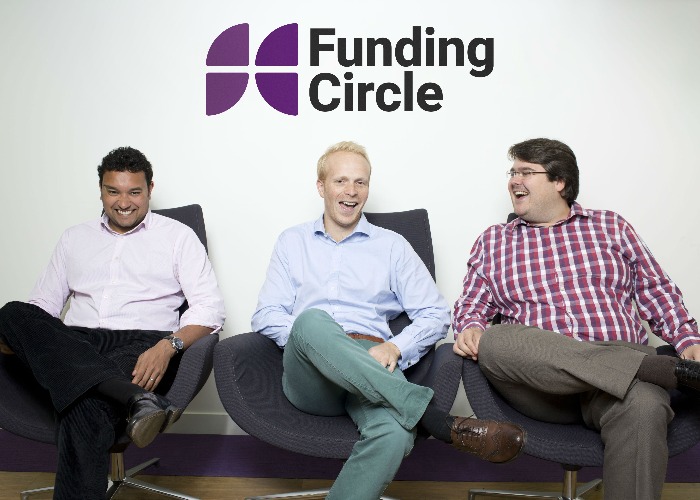Funding Circle review: peer-to-peer lender's best rates, risks and more

The latest tax-free peer-to-peer product comes from Funding Circle and has projected returns of up to 7.2%. Here's all you need to know in terms of risks, rates, fees and protection.
Funding Circle has launched a new Innovative Finance ISA (IFISA) with projected returns of up to 7.2%.
You can invest between £1,000 and £20,000 per year. The IFISA aims to pay 7.2%, or 4.8% if you opt for the conservative option.
For potential investors, peer-to-peer lending can offer more attractive returns than traditional investment options but lacks many of the protections.
Although Funding Circle's 7.2% projected return isn't the highest of any IFISA, it's not far off – and as we've noted with IFISAs before, you need to carefully consider the risks associated with such a juicy headline rate.
So how safe an option is Funding Circle? Let's take a close look at its business model, as well as the risks and fees involved.
This article is part of a wider series on investing, covering all areas from stocks and shares to buy-to-let, peer-to-peer and alternative investments. Click here to view the full guide.
How it works
Funding Circle is a peer-to-peer lender that matches up businesses that want to borrow with individuals and large investors who have money to lend.
It was founded in 2010 by Samir Desai, James Meekings & Andrew Mullinger (pictured above, from left).
Since then, more than 35,623 businesses have borrowed and over 79,231 individuals and institutions are investing.
In addition, since March 2013 the Government has been using Funding Circle as a way to lend to small UK businesses as part of its Business Finance Partnership scheme.
It initially stated its intention to lend £20 million and has since increased this to £80 million. Between the Government and investors, it has lent more than £3.4 billion.
Who do they lend to?
Businesses that have been trading for at least two years and typically have a minimum turnover of £50,000.
What products are available?
For investors
All successful loan applications are given a risk band and listed on the marketplace.
Investors lend automatically using ‘autobid’. You can choose whether you want to take the Balanced option (with a targeted return of 7.2%) or the lower-risk Conservative option (4.8%).
You will receive an interest payment each month, and you can choose to withdraw it or reinvest it.
There is a 1% annual servicing fee, which is factored into the projected return of 7.2%. There is no fee for withdrawing your funds or selling loans to other investors.
As mentioned at the start, these products can also be applied for through the tax-free IFISA that Funding Circle has just launched. The minimum investment is £1,000.
For borrowers
The company offers loans of between £5,000 and £1 million for up to five years.
Because there are no complex bank processes involved, businesses can access the cash far more quickly – as well as at a cheaper rate. Funding Circle does not charge an early repayment fee.
There are a number of products, including unsecured loans, secured loans, where Funding Circle takes a charge over all assets of the business as security.
Funding Circle also offers asset finance, where Funding Circle takes the title of the assets until the loan is repaid).
The rate depends on the type and length of the loan – as well as the risk band you are in.
There is also a fee – starting at 1.5% for A+ short-term loans, rising to 5% for asset finance and higher risk bands over four years.
What are the rates?
The current targeted return is 7.2% for the riskier 'balanced' product, while the lower-risk 'conservative' offer aims for 4.8%.
What protection is in place?
This is the key part, as you'll want to know who your money is being loaned to.
Funding Circle says it vets borrowers carefully. They have to have been operating for at least two years - but typically they have been in business for about eight years – and have a healthy credit history.
Unsecured loans require a personal guarantee as security, and other types of loans are secured on assets, so if a business fails to make a repayment, Funding Circle has the means to go after them for the money.
It’s worth appreciating that bad debts are not uncommon. Funding Circle splits each loan into a risk band between A+ and E, to help you understand the risk.
The estimated percentage of annual bad debt ranges from 0.6% for A+ loans to 8% for E band loans.
Unlike some of its competitors, there is no protection fund to make up the difference if a borrower fails to pay.
Funding Circle says that the best way to protect your money is by spreading it widely, so you won’t be devastated if one company fails to repay.
It says the best approach is to invest in at least 100 companies and put no more than 1% of our money into each firm.
As with any other peer-to-peer lender, Funding Circle is not covered by the Financial Services Compensation Scheme in the same way as a savings account. Investors also don't get the £50,000 protection offered to Stocks & Shares ISA investments.
And finally, unlike some of its P2P rivals, there is no protection fund to make up the difference if a borrower fails to pay.
That said, Funding Circle says it's set up so that if it went out of business, the loans would continue – so the money would not be lost.
Compare returns from different peer-to-peer lenders on loveMONEY's comparison site
Comments
Do you want to comment on this article? You need to be signed in for this feature